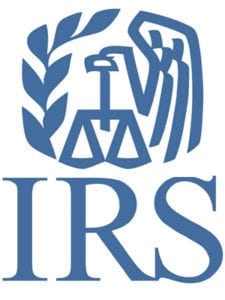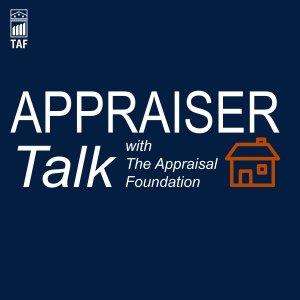
Internal Revenue Code Section 6701
Internal Revenue Code Section 6701 authorizes the imposition of financial penalties on “any person” providing aid, assistance, or advice with respect to a material tax matter and who knows that the result will be an understatement of tax liability. Earlier this year, the IRS’s Office of Chief Counsel issued a memorandum on how Section 6701 should be applied against appraisers. (Internal Revenue Service, Office of Chief Counsel, Subject: “Section 6701,” Memorandum no. 2005 120 16, UILC: 670 1.00-00, 8 February 2005.) The February 8th memorandum responded to a request for guidance on this subject from the appraisal services unit of the IRS’s Large & Mid-Size Business (LMSB) Division. That unit, which is a past of LMSB’s Field Specialist Program, is responsible for reviewing those tax-related appraisals of tangible and intangible property referred to it (except for fine art items that are reviewed by the Service’s Art Advisory Panel) for the purpose of establishing whether the elements of a 6701 infraction exist and, if so, referring the matter for final determination of liability.
Specifically, the Office of Chief Counsel’s memorandum provides guidance concerning the criteria that Service personnel should consider to determine whether to impose a Section 6701 penalty, the administrative procedures necessary to impose one, and the due-process rights of a person who is the subject of the Section 6701 penalty assessment. In essence, it states that the first element of a 6701 infraction requires assistance in the preparation of a document for a return. A second element requires that a person “know, or have reason to believe,” that the document will be used to establish a taxpayer’s “gross income.” The third element requires that the appraiser “have knowledge” that if so used, the document will result in an understatement of the tax liability of another person. The memorandum states that there is a split among courts as to the “level of proof’ required to impose a penalty. Some courts have held that “a preponderance of evidence” is required, while one court has concluded that only “clear and convincing proof” is necessary.
As to administrative procedures for identifying and asserting a Section 6701 penalty, the February 8th memorandum states that it “will usually be identified by examiners through the examination process,” and “as the government has the burden of proof … it can be assessed only by employees who have the requisite knowledge of the facts giving rise to the penalty.” The memorandum cites “revenue agents and office auditors at a Service area office” as the appropriate assessing employees. Although the legal opinion does not specifically mention the “penalty examination” role of the LMSB appraisal specialists in identifying potential 6701 violations, that office would be part of a special examination team responsible for determining whether preparation of the valuation in question aided or assisted in an understatement of tax liability.
The IRS legal memorandum also addresses whether the Service could invoke its civil injunction authority under Section 7408 of the Internal Revenue Code to prevent an appraiser from engaging in prohibited conduct, “including conduct subject to the 6701 penalty.” The Office of General Counsel states that this authority is available if the government can “show that injunctive relief is appropriate to prevent the recurrence of” prohibited conduct. It appears from the memorandum’s discussion of the injunction authority that it might be available against an appraiser without the prior imposition of a 6701 fine (the conduct need be “subject to” a 6701 fine), while a, while a Circular 230 debarment or suspension appears to require a prior actual finding of a 6701 infraction.
The memorandum discusses, at some length, the appraiser’s due-process rights under a 6701 proceeding and the appraiser’s right to challenge the imposition of the 6701 fine after the fact.
The Effect of “Disclaimers”
The Office of General Counsel memorandum does not specifically address two issues: first, the extent, if any, to which the appraisal itself (as opposed to the mindset of the appraiser) affects the question whether a Section 6701 infraction has occurred, and second, whether there is any way in which the appraiser, through use of some type of disclaimer language, can insulate himself or herself from the consequences of an appraisal that is used by a taxpayer to understate tax liability.
As to the first question, the memorandum leaves somewhat in doubt the precise elements of an appraisal engagement that would give rise to a Section 6701 “aiding and abetting” penalty. Does the issue only have to do with the mindset of the appraiser (i.e., knowing that the document will give rise to an understatement of tax liability), or can the penalty be triggered simply because the appraisal is incapable of being substantiated and, therefore, may be used for understatement purposes? Further, is there any circumstance under which an appraiser could be regarded as being in violation of 6701 even if the appraisal itself is capable of being substantiated?
With respect to the second issue, there has been some discussion among tax practitioners covered by the Circular 230 amendments about the use of disclaimer language in communications with clients or in conjunction with tax advice itself that is designed to protect the practitioner (and presumably the client) from violations of the tax laws. Appraisers who provide valuations for tax purposes have also raised this issue. If an appraiser produces, in good faith, an appraisal product for a taxpayer the conclusions of which cannot be substantiated, can the appraiser disclaim “aiding and abetting” responsibility if the appraisal is used by the taxpayer in connection with an understatement of tax liability? Some believe that disclaimers will not trump an otherwise abusive appraisal. We do not know and will not speculate. But additional guidance from the IRS on these questions is necessary and would be appreciated.
Amendments to Treasury Circular 230
In late December of last year, the Treasury Department and Internal Revenue Service issued final regulations, effective 20 June 2005, amending Treasury Circular 230 ”to promote ethical practice by tax professionals who practice before the IRS.” Circular 230 governs practice before the Internal Revenue Service. The revisions provide standards of practice for written advice that tax professionals give to their clients. In the words of a Treasury Department press release, “The final regulations reflect current best practices and are intended to restore and maintain public confidence in tax professionals … The mandatory requirements for written advice that presents a greater potential for concern prohibit practitioners from providing advice that, for example, relies on incorrect factual assumptions or representations, does not consider all relevant facts, or fails to analyze important legal issues.” (IRS and the Treasury Department Amend Circular 230 to Promote Ethical Practice by Tax Professionals, IR-2004- 152, Dec. 17, 2004)
There are two aspects of Circular 230 that should be of particular interest to appraisers providing tax-related valuation services. First, while the terms and conditions of appraiser practice before the IRS clearly are within the authority of the Treasury Secretary (including suspension or debarment), appraisers do not appear to be covered, at least directly, by the Circular 230 amendments affecting “covered opinions” by practitioners.” The term “practitioner” is defined to include “attorneys,” “certified public accountants,” “enrolled agents,” and “enrolled actuaries” but not “appraisers.”
This brings us to the second point of interest, which is that the “best-practices” provisions of Circular 230 do appear to address valuation issues. The Treasury’s explanation of its revised regulations states, as to requirements for “covered opinions” involving a “federal tax issue,” that a practitioner providing a covered opinion “must not assume that a transaction has a business purpose…or make an assumption with respect to a material valuation issue.” A “federal tax issue” is defined as including “the value of property for Federal tax purposes.” The Treasury’s explanation further states, as to factual matters, that “a practitioner must not base the opinion on any unreasonable factual assumptions … A factual assumption includes reliance on a projection, financial forecast or appraisal. It is unreasonable for a practitioner to rely on a projection, financial forecast or appraisal if the practitioner knows or should know that the…appraisal is incorrect or incomplete or was prepared by a person lacking the skills or qualifications necessary to prepare such projection, financial forecast or appraisal.”
Although the government expects tax professionals to comply with all its “best-practices” standards, it is not entirely clear which of the amended Circular 230 provisions are regarded by the Treasury and IRS as “aspirational” only and, therefore, not enforceable through disciplinary actions and which ones will be enforced through the use of sanctions. Nor is it clear how Circular 230’s provisions relating to valuations will affect professional appraisers who are not also “tax practitioners,” as well as those who are. And, given the IRS’s extremely loose definition of what constitutes a “qualified appraiser,” we are extremely interested in how it intends to apply the Circular’s prohibition against basing a covered opinion on an appraisal if the practitioner knows or should know that it was prepared “by a person lacking the skills or qualifications necessary to prepare” it. Nevertheless, we do expect Circular 230 to have a significant impact on individuals and firms providing tax-related appraisal services, and it must be regarded as an important piece of the IRS’s enforcement initiatives directed at appraisers.
Appraiser Responsibilities
As a result of the greater focus of the Department and IRS on professional responsibility and their exasperation with tax-avoidance schemes, which could include the use of advocacy appraisals, those who provide tax-related valuation services will be facing an era of enhanced audits and enforcement sanctions. The new enforcement initiatives, recent changes to Circular 230 involving valuation-related tax advice, and the possibility (some would argue “probability”) that appraisers practicing before the IRS in the future will be subject to penalties for incompetence will be the hallmarks of this new era. There is this additional consideration: If the congressional spotlight continues to shine on tax-related appraisal issues and the Service responds with the ramped-up enforcement initiatives we have described, then the federal government-in the form of the Treasury Department and the IRS-will become a major player in establishing appraiser qualifications and appraisal standards and in sanctioning wrongdoing by appraisers who provide any tax-related appraisal services.
We continue to believe that many of the ills involving tax-related appraisals, both real and perceived, would be greatly mitigated by a requirement that all higher-dollar value Tax Code valuations be performed by professional appraisers who have earned meaningful valuation credentials, who are subject to a code of ethics, and who adhere to the Uniform Standards of Professional Appraisal Practice. While these requirements would not entirely eliminate faulty appraisals, they would ensure a high level of professional responsibility and competence from appraisers who practice before the Service.
As the appraiser-enforcement developments discussed in this article unfold, it is imperative that all professional appraisers monitor them and help shape this changing landscape. We intend to.
Authors
Thanks again to authors Jay Fishman, FASA, Business Valuation Review Editor and Chairman of the American Society of Appraisers Government Relations Committee; Bruce Bingham, ASA, former Chairman of the Business Valuation Committee; and Peter Barash, Government Relations Consultant to the Business Valuation Committee, for sharing this information with us!
Jack Young
NorCalValuation




